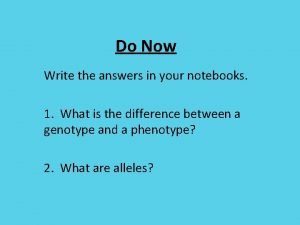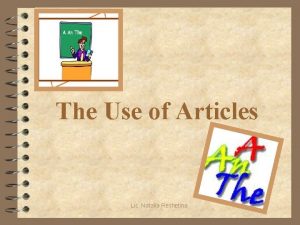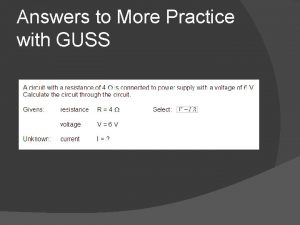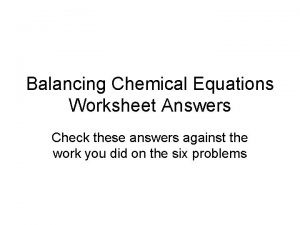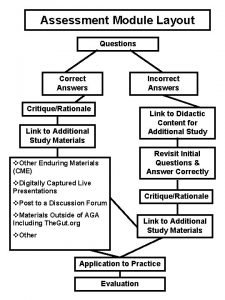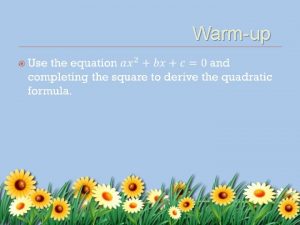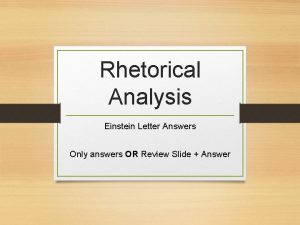Do Now Do Now Answers N C L


















- Slides: 18

Do Now

Do Now Answers N C L L C N C A P P

Enzymes Proteins that catalyzes a chemical reaction

• What happens to the food we eat? It breaks down into…. • Carbohydrates • Lipids • Proteins

What are Enzymes? • Enzymes are proteins • Enzymes act as a catalyst to speed up a chemical reaction

Chemical Reaction: Reactants form Products

Let’s Look at Lactose…. • What is lactose? • Lactose is a disaccharide found in dairy products

What is lactose-Intolerance? • They lack the enzyme: LACTASE • Sugars end in “-ose” • Enzymes end in “-ase”

Enzymes Characteristics • Are specific for what the enzyme will catalyze • Are Reusable • End in –ase • Named for the reaction they help: • Sucrase breaks down sucrose • Proteases breakdown proteins • Lipases breakdown lipids • DNA polymerase builds DNA

Enzymes can be reused again and again Substrate (Reactant) Product Active Site Enzyme-Substrate Complex Enzyme

It’s Shape that Matters!!! • Lock & Key Model • Shape of enzyme allows substrate to fit • Specific Enzyme for each specific reaction

How do enzymes work? • Enzymes work by weakening bonds which lowers activation energy Reactions can occur without the help of catalysts, but not at the speed our body requires. “The energy needed to start a reaction”

Activation Energy • The energy needed to start a reaction. • For example a car needs a car battery to start. It is like a discount on the cost of the reaction

Activation Energy

What Affects Enzyme Activities • 1. Environment Conditions • p. H, temperature, enzyme or substrate concentration • 2. Cofactors and Coenzymes • Substances needed for the enzyme to work • 3. Enzyme Inhibitors • Bind and block the enzyme form working

Denaturing • Denaturing: extreme temperature and p. H can change enzyme shape, rendering it useless.

Temperature • High temperatures cause enzymes to denature(unfold and lose shape) • Low temperatures slow molecules down and fewer collisions occur between enzymes and substrate.

Enzymes and p. H • Different enzymes work best at different p. H values. • The p. H that makes the enzyme most active is known as the optimum p. H. • If the p. H is very high or very low, enzymes can be denatured.
 Now i see it now you don't
Now i see it now you don't Whats the ffa motto
Whats the ffa motto Now write short answers
Now write short answers In your notebook write question
In your notebook write question Silva service now
Silva service now Hide me now
Hide me now Commas in a sentence
Commas in a sentence Uwa help desk phone number
Uwa help desk phone number Rose park nortenos
Rose park nortenos Turkan soray now
Turkan soray now Trending github repositories
Trending github repositories Tollund man hat
Tollund man hat The soldier poem meaning
The soldier poem meaning Introducer comma
Introducer comma Think big and act now
Think big and act now My garden's looking lovely now that daffodils are in flower
My garden's looking lovely now that daffodils are in flower Third conditional past perfect continuous
Third conditional past perfect continuous London in 1666 and now
London in 1666 and now Timeline jesus life
Timeline jesus life


